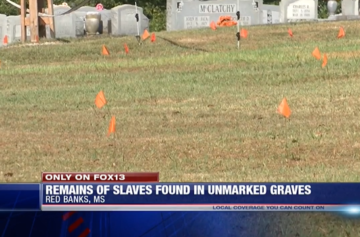Thomas Jefferson, who was personally requested by John Adams to draw up a draft of the Declaration of Independence, initially blamed the king of England for the enslavement of African people. The entry reads, in part:
“He has waged cruel war against human nature itself, violating its most sacred rights of life and liberty in the persons of a distant people who never offended him, captivating & carrying them into slavery in another hemisphere, or to incur miserable death in their transportation thither.”
The passage was deleted by Adams in the final draft, but neither saw the innate contradiction in including a line like “all men are created equal.”
- In fact, Jefferson was a lifetime owner of enslaved men and women. In 1767, at the age of 21, Jefferson inherited 5,000 acres of land from his father, which included 52 enslaved people. By 1822, he owned 16,000 acres and over 200 enslaved Black men and women. Jefferson would become the largest slaveholder in Albermarle County, Virginia.
- Jefferson touted gradual emancipation, but by the time of his death, some enslaved Black men and women had toiled on his vast Monticello plantation for four generations. It was only after his death that overseers of his estate were forced to sell many of Jefferson’s enslaved people to settle his debts amassed by his lavish lifestyle.
- The third president of the United States joined the ranks of seven other presidents who owned and sold enslaved Black men and women.



